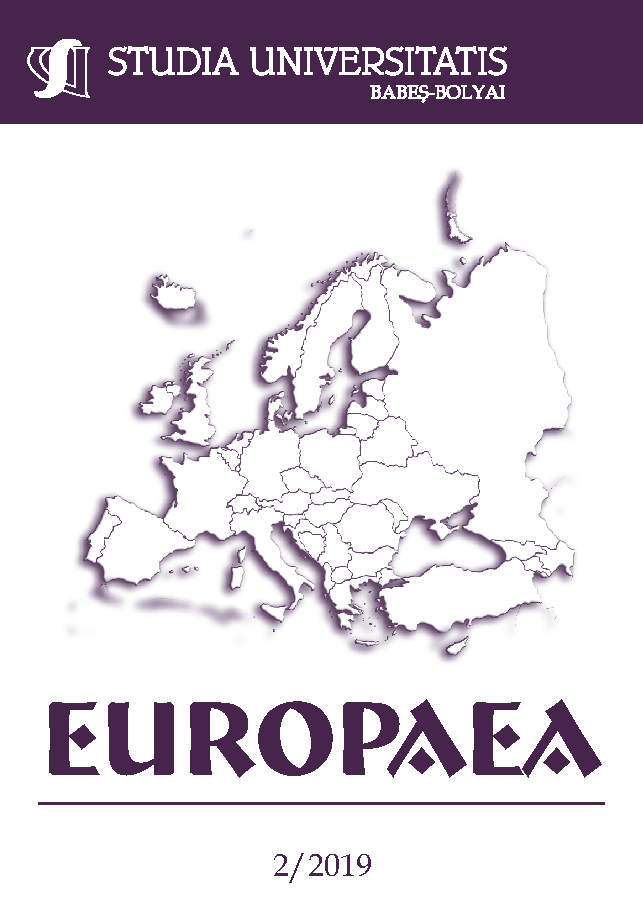THE INVISIBLE ‘GIFT’: THE CHIBOK BRAND AND BOKO HARAM
DOI:
https://doi.org/10.24193/subbeuropaea.2019.2.06Keywords:
Boko Haram, Branding, Terrorism, Nigeria, Chibok GirlsAbstract
Branding has become an essential activity in international relations as states require ways of distinguishing themselves from one another. A similar trend has emerged with non-state actors such as terrorist groups. Following the Chibok Kidnappings of April 2014, the ‘Chibok Brand’ emerged affording Boko Haram considerable international notoriety as the abduction of 276 schoolgirls by a non-state actor was unprecedented. Despite the success of the ‘Chibok Brand’, little research has been done to explain the dual usage of the ‘Chibok Brand.’ Hence, this paper seeks to explore the emergence and continued relevance of the ‘Chibok Brand’ using a combination of desktop research and Twitter analysis. The ‘Chibok Brand’ is explored from three different angles, namely: Boko Haram, the Nigerian government and the West. This paper finds that while the brand is still of relevance in the present time, it only remains so in relation to Boko Haram and the West. The absence of the reference to this brand by the Nigerian government suggests that it underestimates the value of the ‘Chibok Brand’ in sustaining Boko Haram, which could further impede counter-terrorism efforts.References
Bauer, Wofgang (2016), Stolen Girls: Survivors of Boko Haram Tell Their Story, New York: The New Press.
Bring Back Our Girls (2019), [https://bringbackourgirls.ng/]
Collins, Matt (2014), #BringBackOurGirls: The Power of a Social Media Campaign, The Guardian, [https://www.theguardian.com/voluntary-sector-network/2014/may/09/bringbackourgirls-power-of-social-media].
Davis , Jessica (2019), Interview, 17 June 2019.
Ekott, Ini (2019), “Facing Down the Political Establishment”, Africa In Fact no. 48, 100-105.
Habila, Helon (2016), The Chibok Girls, London: Penguin Books.
Kassim, Abulbasit (2018), “BBC Hausa Service Interview with Muhammad Yusef” in Abulbasit Kassim, Michael Nwankpa (eds.), The Boko Haram Reader, Oxford: Oxford University Press, 71-75.
Kassim, Abulbasit, (2018) “Message About the Chibok Girls by Abubakar Shekau” in Abulbasit Kassim, Michael Nwankpa (eds.), The Boko Haram Reader, Oxford: Oxford University Press, 311-317.
Keller, Kevin Lane (2009), “Building Strong Brands in a Modern Marketing Communication Environment”, Journal of Marketing Communications no. 15(2-3), 139-155.
Markovic ,Vesna (2019), Interview, 10 July 2019.
Markovic, Vesna (2019), “Suicide Squad: Boko Haram’s Use of the Female Suicide Bomber” in Women and Criminal Justice, no. 4-5, 1-20.
Marshall, Tim (2016), A Flag Worth Dying For: The Power and Politics of National Symbols, New York and London: Simon & Schuster.
Matfess, Hilary (2017), Women and the War on Boko Haram: Wives, Weapons and Witnesses, London: Zed Books.
Matusitz, Jonathan (2015), Symbolism in Terrorism: Motivation, Communication and Behavior, London: Rowman & Littlefield.
Matusitz, Jonathan (2018), “Brand Management in Terrorism: The Case of Hezbollah”, Journal of Policing, Intelligence and Counter-Terrorism no. 13(1), 1-16.
Okolie-Osemene, James; Okolie-Osemene, Rosemary (2019), “Nigerian Women and the Trends of Kidnapping in the Era of Boko Haram Insurgency: Patterns and evolution”, Small Wars and Insurgencies no. 30(6-7), 1151-1168.
Olutokunbo, Adekalu S. et al. (2015) “Bring Back Our Girls, Social Mobilization: Implications for Cross-Cultural Research”, Journal of Education and Practice no. 6(6), 64-75.
Opperman, Jasmine (2019), Interview, 24 June 2019.
Pearson, Elizabeth (2018) “Wilayat Shahadat: Boko Haram, the Islamic State, and the Question of the Female Suicide Bomber” in Jacob Zenn (ed.), Boko Haram Beyond the Headlines: Analyses of Africa’s Enduring Insurgency, New York: Published interpedently by the United States Military Academy, 13-52.
Polity (2014), ANCWL: Statement by ANC Women’s League on the #BRINGBACKOURGIRLS programme of action (19514), [https://www.polity.org.za/article/ancwl-statement-by-the-anc-womens-league-on-the-bringbackourgirls-programme-of-action-19052014-2014-05-19].
South China Morning Post (2019), 22,000 Missing in Nigeria because of Boko Haram, Red Cross Says, [https://www.scmp.com/news/world/africa/article/3026965/22000-missing-nigeria-because-boko-haram-red-cross-says].
The Voice (2015), Boko Haram Kidnapping Civilians to Use as “Human Shields”, [https://www.voice-online.co.uk/article/boko-haram-kidnapping-civilians-use-human-shields].
Thurston, Alexander (2018), Boko Haram: The History of an African Jihadist Movement, Princeton: Princeton University.
Time (2016), A Stage Battle is Going on Over the Girls Who Escaped Boko Haram and Came to the U.S., [https://time.com/4378328/boko-haram-chibok-us-bring-back-our-girls/].
United Nations Children’s Fund (2016), Beyond Chibok [https://www.unicef.org/infobycountry/files/Beyond_Chibok.pdf].
Warner, Jason; Chapin, Ellen; Matfess, Hilary (2018), “Suicide Squads: The Logic of Linked Suicide Bombings”, Security Studies no. 28(1), 1-33.
Youde, Jeremy (2009) “Selling the State: State Branding as a Political Resource in South Africa”, Place Branding and Public Diplomacy no. 5(2), 126-140.
Zenit (2019), Women Maimed as Boko Haram Strikes Terror in Cameroon, [https://zenit.org/articles/women-maimed-as-boko-haram-strikes-terror-in-cameroon/].
Zenn, Jacob (2014) “Boko Haram and the Kidnapping of the Chibok Schoolgirls”, Counter-Terrorism Centre Sentential no. 7(5), 1-7.
Zenn Jacob; Pierri, Zacharias (2017), “How Much Takfir is Too Much Takfir? The Evolution of Boko Haram’s Factionalism”, Journal of Deradicalization no. 11, 281-308.
Downloads
Published
How to Cite
Issue
Section
License
Copyright (c) 2019 Studia Universitatis Babeș-Bolyai Europaea

This work is licensed under a Creative Commons Attribution-NonCommercial-NoDerivatives 4.0 International License.






